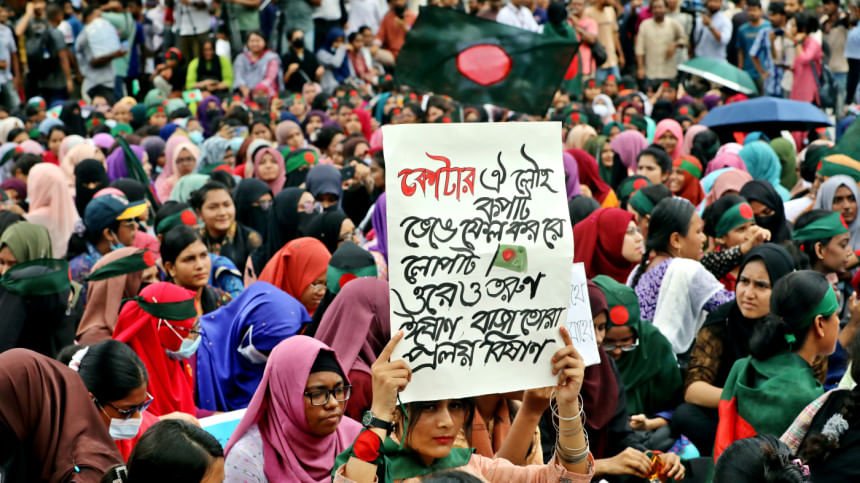In the turbulent months of July and August 2024, Bangladesh witnessed a student-led revolt that marked the overthrow of a dictatorial rule entrenched for over 15 years. A year later, three young female activists who played pivotal roles in the movement—Nasita Binte Nasir, Lamisha Jaman, and Kameliya Sharmin Chura—share their harrowing experiences and survival tales with Mahiya Tabassum from The Daily Star.
Nasita Binte Nasir, an undergraduate at the Islamic University of Technology (IUT), initially hesitated to engage in the protests. However, a negative encounter with a political party rally on July 16 pushed her to join an independent student group’s demonstration the following day in Uttara. As the movement gained momentum, she found herself amid escalating violence, with state forces resorting to brutal crackdowns on unarmed demonstrators.
The chaos unfolded rapidly as police and military forces unleashed rubber bullets and a tank on the protesters, leading to injuries and fatalities. Despite the perilous situation, Nasita and her fellow students, particularly the female participants, bravely provided medical aid and support to the wounded amidst the tumult.
The uprising propelled Nasita and her peers from Rajuk Uttara Model College into a relentless cycle of street activism, galvanizing more protests in the days that followed. However, her newfound visibility brought unwelcome attention, including death threats and online harassment, prompting her to deactivate her social media accounts for safety.
Amid the turmoil, Lamisha Jaman, a student at Jahangirnagar University, found herself thrust into the heart of the protests following a violent clash between students and authorities at Dhaka University. As the demonstrations intensified, Lamisha vividly recalls the chaos and danger that enveloped the streets, with clashes, tear gas, and the ominous presence of armed activists adding to the turmoil.
The protests took a grave turn as Lamisha and her fellow students faced relentless attacks, seeking refuge in buildings and enduring harrowing moments of uncertainty and fear. The ordeal underscored the students’ resilience and solidarity as they navigated the tumultuous events with courage and determination.
Kameliya Sharmin Chura, also a student at Jahangirnagar University, joined the protests compelled by a sense of duty and solidarity with her fellow students facing violent reprisals. Her pivotal role in rallying female students to aid the trapped protesters during a critical confrontation at the university highlights the bravery and unity that defined their struggle.
The accounts of these young activists paint a vivid picture of a tumultuous period marked by sacrifice, resilience, and unyielding determination in the face of repression and adversity. Despite the regime change, the pervasive sense of insecurity and ongoing challenges underscore the unfinished struggle for justice and equality in a post-uprising Bangladesh.

